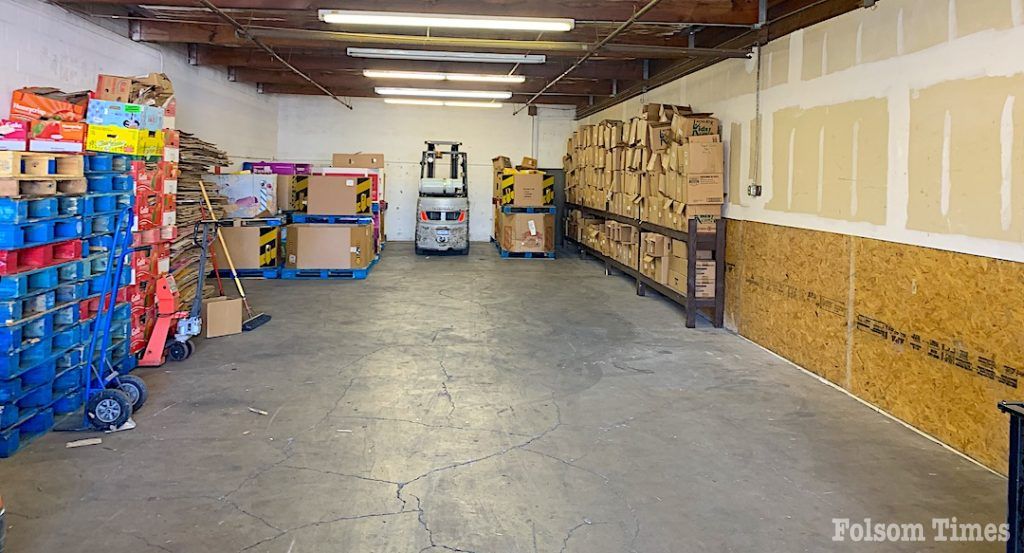The Twin Lakes Food Bank in Folsom routinely serves 200 households a week with food assistance. With that number climbing to 300 in February, the local nonprofit is suffering a shortage, leaving many of the shelves bare in its warehouse as inflation continues to affect just about everyone at the grocery store, the gas pump, and in the way of utility costs.
“It is hard to implement a well-paced inventory distribution plan when the needle of need keeps moving up,” said Elizabeth Martin, operations manager at Twin Lakes Food Bank, who is witnessing firsthand the rapid rise in the need for assistance.
In an effort to fill the gap, the Twin Lakes Food Bank is calling out to the community for assistance as it faces a surge in demand for assistance of around 30% or more, combined with the ongoing decline in food donations over recent months as even long-time donors are on tighter budgets.
At last count, Twin Lakes Food Bank estimated it had approximately a six-week supply of non-perishable foods to serve its previous distribution of 200 households each week. However, that supply will fall short of the six-week mark with the rise in households requesting assistance, which has required the local charity to not only ask for local product donations but also make adjustments to its distributions that assist those in need in Folsom as well as areas of Granite Bay and El Dorado Hills.
Lisa Tuter, executive director of Twin Lakes Food Bank, shared some of the conservation measures they have implemented to “stretch” their supplies and ensure nobody in need is left empty-handed.
“This is a difficult decision to make and a loss for our most vulnerable of the vulnerable,” said Tuter.
As it has launched a spring food drive to generate donations, some of the measures already in place to address the shortfall include decreasing the amount of canned items the food bank supplies to its guests and temporarily suspending canned food delivery to some of the charity’s community distribution partners like Folsom Lake College and low-income and senior citizen apartment complexes in the community.
“We are hopeful, however, that members of this generous community will step up as it has in the past to fill the need and restore adequate levels of supplementary groceries for our food-insecure neighbors,” said Tuter.
By launching the emergency Spring food drive, Tuter hopes they can collect at least 30,000 pounds of non-perishable items to sustain those facing food insecurity in the coming months. Community members are urged to contribute by either purchasing non-perishable food items or gathering donations from their own cupboard and asking their neighbors, family, and friends to join the effort. According to Tuter and Martin, the most-needed items include canned main dishes, such as stew, chili with meat, ravioli, and similar items; canned soup; canned meat such as tuna and chicken; cereal; and tomato products such as tomato sauce, stewed tomatoes, diced tomatoes, and tomato paste.
Donations can be dropped off at Twin Lakes Food Bank at 327 Montrose Drive in Folsom, Monday through Friday between 8 a.m. and 12:30 p.m. Those making donations can look for the blue donation barrels upon arrival at the facility, where volunteers will be ready to receive contributions. While actual food donations are their immediate need, Twin Lakes Food Bank knows some may be unable to take on the task of dropping off supplies. Those wishing to assist the organized financially can also do so ONLINE BY CLICKING HERE.
“It is not uncommon to appeal to the community for non-perishable food donations in the summer months to get us through until the Folsom Community Service Day Food Drive in September, which usually provides up to nine months of food for our food-insecure neighbors,” said Tuter. “This year, the need for help has come early as food donations have slowed considerably and the number of families coming to the food bank have increased by 30%, so we are holding the ‘Emergency Spring Food Drive,’ asking the greater Folsom community to help us.”
For more information and to get involved in helping Folsom’s Twin Lakes Food Bank, residents can visit their website at www.twinlakesfoodbank.org.





